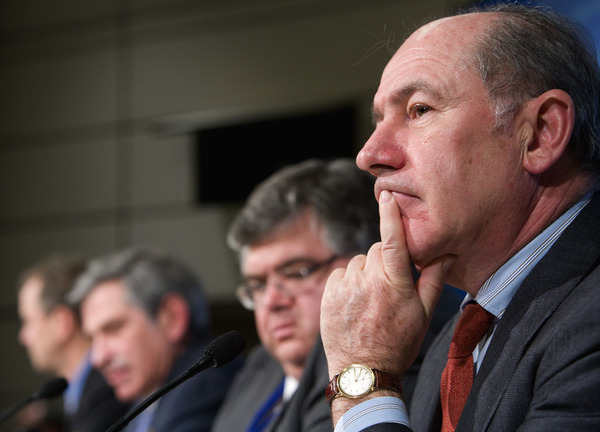Bankers by Default
Prior to its downfall, politicians and their advisors occupied all the highest positions at Bankia, a new display of the typical division of seats between the country’s principle political parties.
When the defaults amassing in savings and loan banks came into the light, citizens and journalists finally began to pay more attention to an exceedingly familiar phenomenon: the politicization of savings and loan banks. For years, political parties have been placing their members in management positions at these institutions. Bankia is not the exception to this rule, but the greatest example of this partisan behavior.
The Classic Divide: Partido Popular – Partido Socialista Obrero Español
Rodrigo Rato, minister of Economy and vice president of both the José María Aznar administrations, is the poster child of this partisan system of appointments. At first glance, Rato seems to have all of the qualifications to run the bank—he was managing director of the IMF for three years and an advisor to Banco Santander until coming to Caja Madrid, the last position he held before heading the new Bankia. He was deputy of the Partido Popular (PP) intermittently from ‘82 to 2004, during which time he was one of the strongest voices of the party. After resigning from Bankia on May 2012, Telefónica hired him as its advisor for Latin America, according to the press, but no public document confirms this position and the company has not responded to our inquiries about the subject. The former Vice President of Spain did not leave the entire banking world behind him with Bankia, for Emilio Botín reappointed him as an advisor to Banco Santander.
Rato is not the only director who landed a position at Bankia via a seat in Congress. Virgilio Zapatero, vice president of Caja Madrid, represents the other side of the partisan system. A Spanish Socialist Worker’s Party (PSOE) deputy until 1994, Zapatero was secretary of State and minister of Court Relations during the Felipe González administration. His ties to the PSOE continue through his trusteeship at the Pablo Iglesias Foundation.
Also coming to Bankia from the ranks of the PSOE was Antonio Tirado, member of the PSPV (Socialist Party of Valencia) and mayor of Castellón in the eighties. Tirado, vice president of Bancaja before the merger, is yet another Bankia board member representing the Valencian insterests of the institution.
Despite all this, the PP remained the top dog in the deal. Bankia’s second-in-command and Rato’s right hand man was José Manuel Fernández Norniella, president of the food company Ebro Puleva (now Ebro Foods) from 2000 to 2005, Aznar’s secretary of commerce and tourism from ‘96 to ’98 and deputy of the PP from ’93 to ’96. He also has links to Cristobal Montoro. In fact, Fernández was vice president of the consultant group, now ministry, Montoro founded, Equipo Económico until August 2009.
…and the Izquierda Unida
If the pie is big enough, the PP and PSOE typically make a space for another party. In Bankia’s case, the United Left (IU) secured a seat at the table via Caja Madrid. José Antonio Moral Santín, member of the Assembly of Madrid in the second and third legislatures, was named a member of Caja Madrid’s board of directors before and after the merger. This was certainly not the first time he acquired a position through his political ties. He had already been an executive in another company that, like Bankia, should have been nonpartisan: Telemadrid, for which he served as advisor and president.
